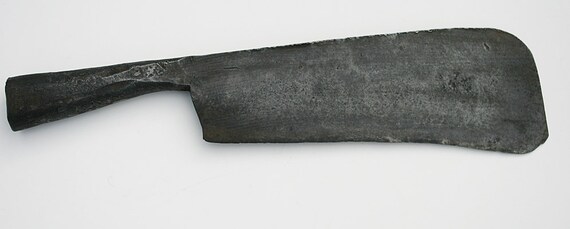- Joined
- Mar 8, 2008
- Messages
- 25,892
Apparently the bones were even kept and sold, as well. May have come in handy during such work as well, though they used spade-shaped knives for much of the jointing work.
Part of my suspicion of it being whaling industry related is that the particular shaping of the shank and socket bears strong similarities to the way that the shanks and sockets of flensing knives, heading spades, and the other bladed processing tools are all formed. Similarities in tooling marks can sometimes be a false positive, but reading them can sometimes be fairly revealing.
Part of my suspicion of it being whaling industry related is that the particular shaping of the shank and socket bears strong similarities to the way that the shanks and sockets of flensing knives, heading spades, and the other bladed processing tools are all formed. Similarities in tooling marks can sometimes be a false positive, but reading them can sometimes be fairly revealing.












